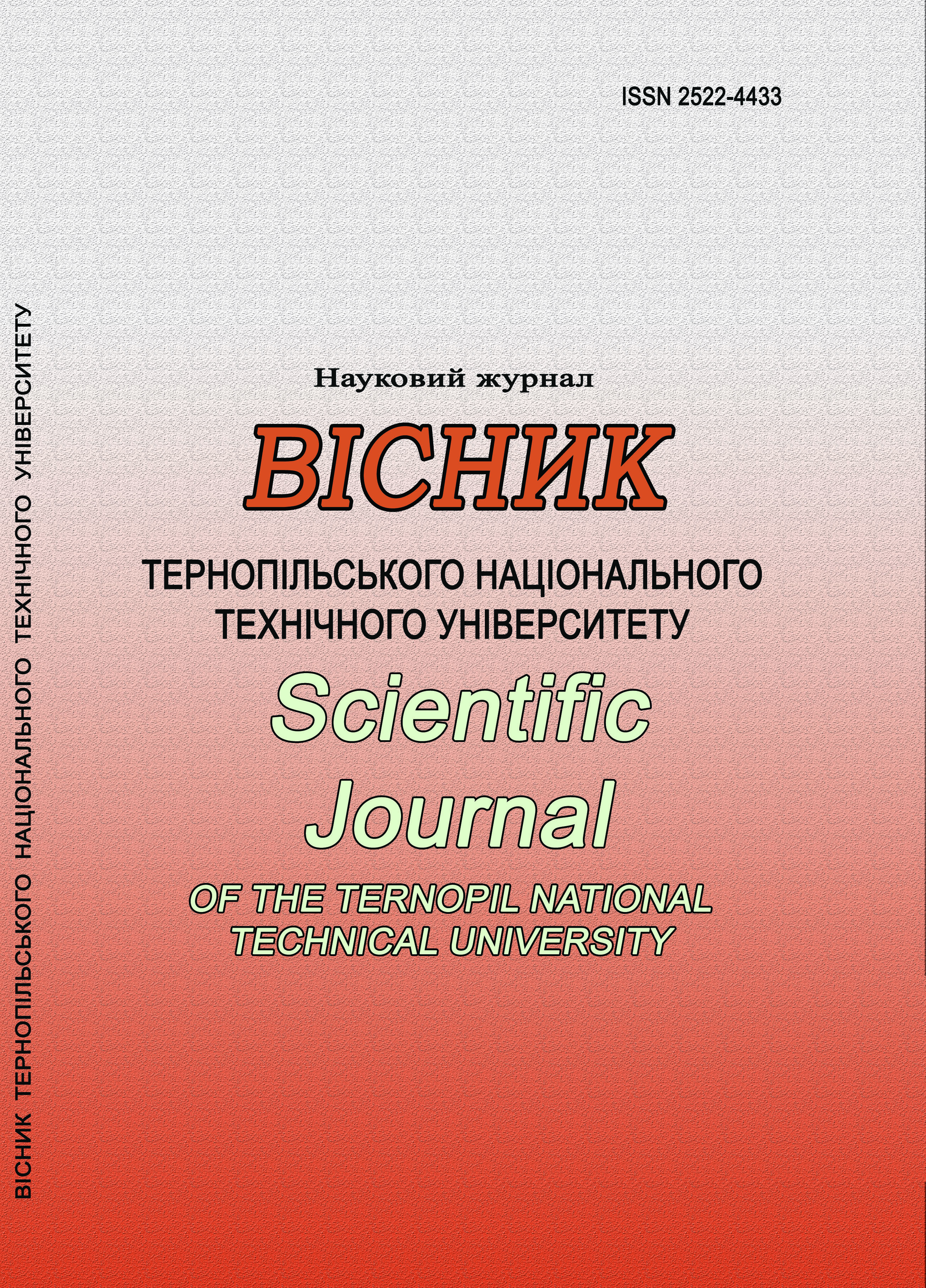Physico-chemical properties and wear resistance of nitrided steel 38KhMUA
Main Article Content
Abstract
The influence of regime (temperature, composition of gas mixture and its pressure) and energy characteristics (voltage, current density, specific discharge power) at hydrogen-free-nitriding in a glow discharge (HFNGD) on the structure, phase composition of nitrided layers is investigated. It is shown that due to the combination of regime and energy parameters of HFNGD it is possible to achieve physical and chemical indicators of nitrided layers set by operating conditions. The set of traditionally fixed values of regime parameters (temperature, gas mixture connection, pressure and saturation time) without taking into account energy characteristics (voltage, current density and specific discharge power) significantly reduces the technological capabilities of HFNGD. With controlled regulation of the energy characteristics of HFNGD, a significant reduction in the energy consumption of the nitriding process is achieved. It is established that the energy levels of the main subprocesses differ significantly: the formation of nitrides occurs at low energies, surface sputtering is realized at high voltage values, and nitrogen diffusion occurs at high current densities. In cases where the flow energy is insufficient, either a glow discharge may not occur at all, or at insufficient stress the nitride layer on the surface is not sprayed and it acts as a barrier that prevents the diffusion process into the inner layers of the metal, leading to low physicochemical indicators of nitrided layers. The priority in the formation of one or another phase (ɛ, γʹ, u, α), the quantitative ratio between them and the required performance properties of the metal, respectively, can be achieved only through an independent combination of energy and regime characteristics of HFNGD.
Article Details
Issue
Section

This work is licensed under a Creative Commons Attribution 4.0 International License.
References
1. Kaplun V. G., Kaplun P. V. Ionnoe azotirovanie v bezvodorodnyh sredah: monografiya. Khmelnitskiy: HNU, 2015.
2. Kaplun P. V. Kontaktna vytryvalist ta znosostiikist stalei z pokryttiamy pry terti kochennia: monohrafiia. Khmelnytskyi: KhNU, 2018.
3. Lahtin Yu. M., Kogan Ya. D. Struktura i prochnost azotirovannyih sloev. M.: Metallurgiya, 1982.
4. Steel Heat Treatment. Metallurgy and Technologies / edited by G.E. Totten. Portland, Oregon, USA: Taylor & Francis Group, 2006.
5. Pastuh I. M. Teoriya i praktika bezvodorodnogo azotirovaniya v tleyuschem razryade. Harkov: NNTs HFTI, 2006.
6. Stechyshyn M. S.,Martynyuk A. V., Bilyk Y. M., Oleksandrenko V. P., Stechyshyna N. M. Influence of the Ionic Nitriding of Steels in Glow Discharge on the Structure and Properties of the Coatings. Materials Science. 2017. 53 (3). P. 343–349. DOI: https://doi.org/10.1007/s11003-017-0081-z
7. Pohrelyuk I. M., Kindrachuk M. V., Lavrys’ S. M. Wear Resistance of VT22 Titanium Allo After Nitriding Combined with Heat Treatment. Materials Science. 2016. № 52 (1). P. 56–61. DOI: https://doi.org/10.1007/s11003-016-9926-0
8. Arzamasov B. N., Bratuhin A. G., Eliseev Yu. S., Panayoti T. A. Ionnaya himiko-termicheskaya obrabotka splavov. M.: Izd-vo MGTU im. N. E. Baumana, 1999.
9. Pye D. Practical Nitriding and Ferritic Nitrocarburizing. Ohio. ASM International, 2003. DOI: https://doi.org/10.31399/asm.tb.pnfn.9781627083508
10. Keller K. Schichtaufbauglimmnitrierten Eisen Werkstoffe. Harterei-TechnischeMitteilung. 1971. Bd. 26, Nо. 2. Р. 120–128.
11. Stechyshyn М. S., Stechyshyna N. M., Kurskoi V. S. Corrosion and Electrochemical Characteristics of the Metal Surfaces (Nitrided in Glow Discharge) in Model Acid Media March 2018. Volume 53. Issue 5. P. 724–731. DOI: https://doi.org/10.1007/s11003-018-0129-8
12. Stechyshyn M. S., Skyba M. E., Sukhenko Yu. G., Tsepenyuk M. I. Fatigue Strength of Nitrided Steels in Corrosion-Active Media of the Food Enterprises. Materials Science. July 2019. Volume 55. Issue 1. P. 136–141. DOI: https://doi.org/10.1007/s11003-019-00261-8
13. Stechyshyn М. S., Stechyshyna N. М., Martynyuk A. V., Luk’yanyuk M. M. Strength and Plasticity of the Surface Layers of Metals Nitrided in Glow Discharge. Materials Science: Springer (USA). 2018. 54 (5). P. 55–60. DOI: https://doi.org/10.1007/s11003-018-0156-5
14. Stechyshyn M. S., Skyba M. E., Student M. M., Oleksandrenko V. P., Luk’yanyuk M. V. Residual Stressesin Layersof Structural Steels Nitridedin Glow Discharge. 2018. Materials Science. 54 (3). P. 395–399. Author ID: 57204929241. DOI: https://doi.org/10.1007/s11003-018-0197-9

